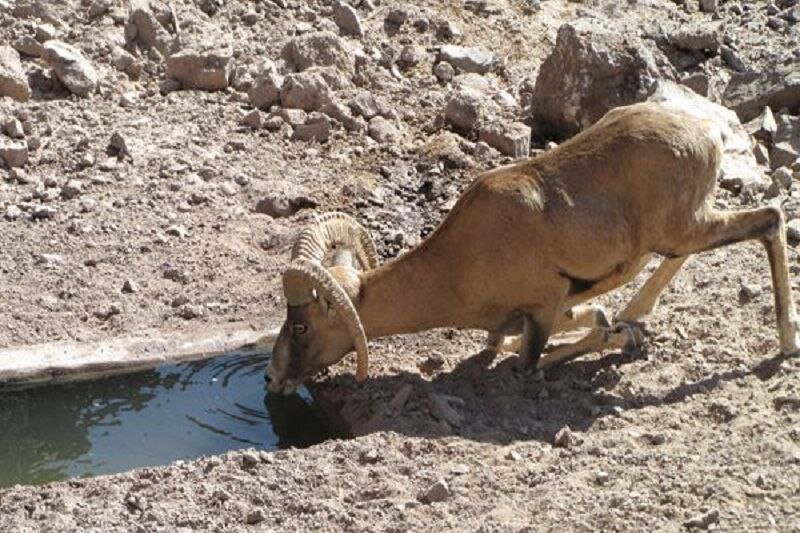Spring rainfalls revive Lake Urmia’s reservoirs for wildlife

TEHRAN – Recent precipitations in spring have restored Lake Urmia's reservoirs, with 550,000 litres of water being stored for the wildlife, Behzad Shir-Panjeh, head of National Park of Lake Urmia, has said.
Lake Urmia in the north-western West Azarbaijan province started to dry up in the 2000s. The lake is the largest in West Asia and the sixth-largest salt lake in the world, with a water surface area of 5,000 to 6,000 square kilometers.
The rainfalls in the lake's basin have contributed to the growth of vegetation and shrubs, providing a favourable source of food for wildlife in the islands as the amount of water reserves resurged compared to the past Iranian year (March 2024 – March 2025), he noted.
The official went on to say that there are five water reservoirs in the Ashk Island of Lake Urmia, which is considered one of the most important habitats of Persian yellow deer, and two or one water reservoirs in Espir and Kabudan Islands; the collected water will be released during summer.
The islands are home to Persian yellow deer, goats, rams, various mammals, reptiles, and birds.
Restoration efforts
Through a joint project led by the United Nations Development Programme (UNDP) and funded by the Government of Japan, the Food and Agriculture Organization of the United Nations (FAO) is going to join to promote sustainable agricultural practices and solutions for the conservation of Lake Urmia.
On December 1, 2024, the Government of Japan and UNDP signed an exchange of notes to launch “The Project for Developing Conservation Systems of Wetlands in Lake Urmia and Other Wetlands, Including
Their Surrounding Communities.” The project, which runs from 2024 to 2028, will be implemented in partnership with the Department of Environment and FAO.
Focusing on sustainable agriculture and climate-adapted livelihoods, the initiative seeks to deliver long-term benefits for local communities while preserving the biodiversity of wetlands as critical ecosystems.
Lake Urmia faces significant challenges due to the overconsumption of water resources, magnified by climate change impacts, which have severely impacted its ecosystem.
Agricultural activities in the region are increasingly vulnerable to water shortages, a situation exacerbated by the effects of climate change. Studies indicate that these climatic changes could further disrupt agrifood systems and the lake’s fragile environment in the future.
FAO, with the support of the government of Japan, identified technical agricultural solutions to increase water efficiency in the agriculture sector at the Lake Urmia basin, which may be efficient in saving the internationally known biosphere reserves.
Since 1995, Lake Urmia has been shrinking due to rapid upstream agricultural expansion and climate change. These forces have pushed the precious lake to the verge of depletion and have put the region’s health, economy, environment, industry, and agriculture at risk.
Despite the efforts of the Lake Urmia Restoration Program National Committee and its focus on the Lake’s restoration since 2013, the continuation of the critical situation demonstrates that sustainability, macro and micro, management solutions should be considered as the main essence of action plans.
In a concerted effort to address the challenges facing the Lake Urmia Basin in 2016, FAO launched the “Integrated Program for Sustainable Water Resources Management in the Lake Urmia Basin,” which was funded by the Government of Japan.
Key technical outcomes of this initiative included the implementation of a water accounting plus project in the Lake Urmia Basin and the identification of water-consuming hotspots within the basin. Notably, water accounting revealed the significant contribution of irrigated and rainfed agriculture to the Lake’s total evapotranspiration, emphasizing the importance of water-saving measures for the Lake’s restoration.
MT/MG
Leave a Comment